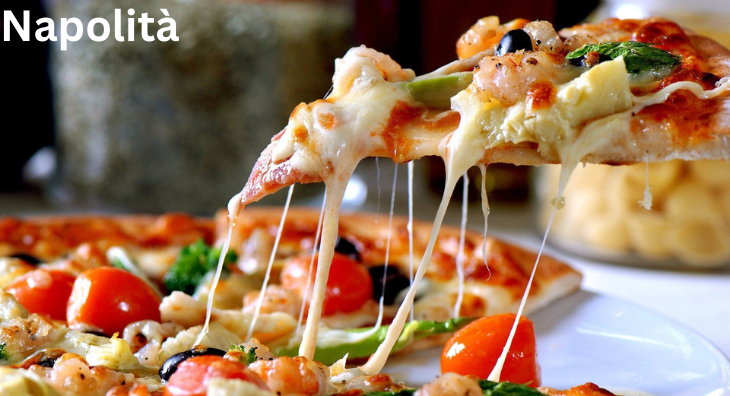Outline of the Article
Table Of Contents
- 1 Outline of the Article
- 1.1 Introduction to Napolità
- 1.1.1 The Origin and History of Napolità
- 1.1.2 Ingredients and Preparation of Napolità
- 1.1.3 Variations of Napolità
- 1.1.4 Cultural Significance of Napolità
- 1.1.5 Napolità Around the World
- 1.1.6 Napolità and Italian Cuisine
- 1.1.7 Health Benefits of Napolità
- 1.1.8 Tips for Making Authentic Napolità at Home
- 1.1.9 Where to Enjoy Napolità
- 1.1.10 Napolità: Myths vs. Facts
- 1.1.11 The Future of Napolità
- 1.1.12 A Culinary Delight
- 1.1.13 in Popular Culture
- 1.2 Conclusion
- 1.3 FAQs About Napolità
- 1.1 Introduction to Napolità
- Introduction to Napolità
- The Origin and History
- Ingredients and Preparation
- Authentic Ingredients
- Traditional Preparation Methods
- Variations
- Classic Margherita
- Marinara
- Neapolitan-style Sfogliatella
- Cultural Significance of
- Around the World
- and Italian Cuisine
- Health Benefits
- Tips for Making Authentic at Home
- Where to Enjoy
- : Myths vs. Facts
- The Future
- : A Culinary Delight
- in Popular Culture
- Conclusion
Introduction to Napolità
Napolità, often referred to simply as “Naples pizza,” is a culinary masterpiece that hails from the vibrant city of Naples, Italy. Renowned for its simplicity, flavorful ingredients, and crispy yet tender crust, has captivated the taste buds of people worldwide.
The Origin and History of Napolità
The history of Napolità traces back to the streets of Naples in the 18th century. Legend has it that the Margherita pizza, the most iconic variant ofit, was created in 1889 by Pizzaiolo Raffaele Esposito in honor of Queen Margherita of Savoy. Its ingredients – tomatoes, mozzarella, and basil – were chosen to represent the colors of the Italian flag.
Ingredients and Preparation of Napolità
Napolità boasts a few simple yet high-quality ingredients. San Marzano tomatoes, buffalo mozzarella, extra-virgin olive oil, and fresh basil are essential components that contribute to its authentic flavor profile.
In Naples, pizzaiolos are meticulously prepared using traditional methods. The dough is made from finely ground flour, water, yeast, and salt, then left to ferment for hours to achieve the perfect texture and flavor.
Variations of Napolità
While the Margherita remains the epitome of Napolità, several variations exist. The Marinara, with its robust tomato and garlic base, and the Neapolitan-style Sfogliatella, a sweet pastry filled with ricotta, are just a few examples of the diverse range of offerings.
Cultural Significance of Napolità
Beyond its culinary excellence, Napolità holds significant cultural importance in Naples and beyond. It serves as a symbol of Neapolitan identity and pride, embodying the city’s rich history and traditions.
Napolità Around the World
Thanks to globalization, Napolità has transcended geographical boundaries and gained popularity worldwide. From New York to Tokyo, pizzerias specializing in authentic can be found, each offering its unique take on this beloved dish.
Napolità and Italian Cuisine
Napolità occupies a revered place in Italian cuisine, serving as a cornerstone of culinary heritage. Its influence extends beyond pizza, inspiring chefs to experiment with -inspired dishes in various cuisines.
Health Benefits of Napolità
Contrary to common belief, Napolità can be a nutritious choice when prepared with wholesome ingredients. Rich in antioxidants, vitamins, and minerals, it offers a balanced blend of carbohydrates, protein, and healthy fats.
Tips for Making Authentic Napolità at Home
Achieving the authentic taste of Napolità at home requires attention to detail and quality ingredients. Opt for San Marzano tomatoes, fresh buffalo mozzarella, and high-quality olive oil, and invest time in mastering the art of dough fermentation and pizza assembly.
Where to Enjoy Napolità
While Naples remains the ultimate destination for experiencing authentic, renowned pizzerias worldwide offer exceptional renditions of this classic dish. From Michelin-starred restaurants to humble trattorias, there’s no shortage of places to indulge in deliciousness.
Napolità: Myths vs. Facts
Despite its widespread popularity, is not immune to myths and misconceptions. Debates over the “right” way to make and its supposed health implications continue to spark discussions among food enthusiasts.
The Future of Napolità
As culinary tastes evolve and global food trends emerge, the future remains bright. Innovations in pizza-making techniques, sustainable sourcing practices, and flavor combinations promise to remain relevant for generations to come.
A Culinary Delight
Beyond its gastronomic appeal, offers a sensory experience like no other. From the aroma of freshly baked dough to the vibrant colors of ripe tomatoes and basil, every bite is a celebration of flavor and tradition.
in Popular Culture
Napolità’s cultural significance extends to popular culture, where it has been immortalized in films, literature, and music. Its portrayal in media reflects its status as a beloved culinary icon cherished by people of all backgrounds.
Conclusion
In conclusion, Napolità transcends its status as a mere dish; it’s a cultural phenomenon that symbolizes the spirit of Naples and the artistry of Italian cuisine. Whether enjoyed in a bustling pizzeria or lovingly crafted at home, continues to captivate hearts and palates worldwide.
FAQs About Napolità
-
Is pizza the same as regular pizza?
- While shares similarities with other pizza varieties, its specific ingredients and preparation methods distinguish it as a unique culinary creation.
-
Can I make it at home without a pizza oven?
- While a wood-fired oven is ideal for achieving authentic taste and texture, it’s possible to make delicious versions at home using a conventional oven or grill.
-
What sets it apart from other pizza styles?
- is characterized by its thin, chewy crust, minimal toppings, and emphasis on high-quality ingredients sourced from the Campania region of Italy.
-
Are there any vegetarian options?
- Yes, many variations, such as the Margherita and Marinara, are vegetarian-friendly, making them suitable choices for those following a vegetarian diet.
-
Is suitable for individuals with gluten intolerance?
- While traditional dough contains gluten, gluten-free alternatives are available for individuals with gluten intolerance or sensitivity.
